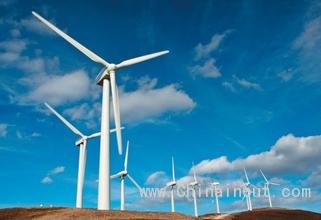中國(guó)人民銀行研究局首席經(jīng)濟(jì)學(xué)家馬駿在參加2014夏季達(dá)沃斯“中國(guó)前景展望”分論壇時(shí)表示,,中國(guó)出口增長(zhǎng)還是比較好的,,但經(jīng)濟(jì)還存在下行風(fēng)險(xiǎn),主要是房地產(chǎn)銷售比較疲弱,,房地產(chǎn)投資可能會(huì)進(jìn)一步放緩,。
但是中國(guó)還是有政策來(lái)保持今后經(jīng)濟(jì)增長(zhǎng)的總體穩(wěn)定的。另外需要強(qiáng)調(diào)的一點(diǎn)是,,盡管GDP增長(zhǎng)有所放緩,,但就業(yè)形勢(shì)還不錯(cuò),失業(yè)率呈現(xiàn)下降趨勢(shì),,勞動(dòng)力市場(chǎng)的供求關(guān)系在改善,。
對(duì)于中國(guó)經(jīng)濟(jì)的結(jié)構(gòu)轉(zhuǎn)型,我認(rèn)為,,中國(guó)未來(lái)的結(jié)構(gòu)調(diào)整將加速,,其中包括從制造業(yè)為主導(dǎo)的增長(zhǎng)模式轉(zhuǎn)到服務(wù)業(yè)主導(dǎo)的模式。這反映出了消費(fèi)者偏好的變化,,也反映出了人口結(jié)構(gòu)的變化,。有關(guān)人口預(yù)測(cè)估計(jì),我國(guó)的老齡人口在今后的15年將會(huì)增加70%,,因此作為服務(wù)業(yè)一部分的醫(yī)療行業(yè)將會(huì)非??焖俚匕l(fā)展。
第二個(gè)重要的結(jié)構(gòu)性變化是能源結(jié)構(gòu)將從以常規(guī)煤炭為主轉(zhuǎn)向更多地消費(fèi)清潔能源,,包括天然氣,、風(fēng)能、太陽(yáng)能,。另外,,通過(guò)創(chuàng)新來(lái)提高附加值,對(duì)沖勞動(dòng)力成本快速上升和勞動(dòng)密集型制造業(yè)外移的壓力,,也是我們的結(jié)構(gòu)轉(zhuǎn)型的一個(gè)重要內(nèi)容,。
中國(guó)的經(jīng)濟(jì)結(jié)構(gòu)變化,將對(duì)世界其他國(guó)家產(chǎn)生影響,。由于中國(guó)勞動(dòng)力成本進(jìn)一步上升,,一些勞動(dòng)密集型產(chǎn)業(yè)轉(zhuǎn)向其他新興市場(chǎng),包括印度,、孟加拉國(guó),、越南,可以促進(jìn)這些國(guó)家的增長(zhǎng),尤其它們的制造業(yè)和交通運(yùn)輸業(yè)的發(fā)展,。
同時(shí)中國(guó)將進(jìn)一步變成資本輸出的國(guó)家,,包括未來(lái)通過(guò)金磚五國(guó)銀行和亞洲基礎(chǔ)設(shè)施投資銀行的渠道。另外中國(guó)還將是世界最大的清潔技術(shù)的消費(fèi)和進(jìn)口國(guó),。去年,,中國(guó)的太陽(yáng)能和風(fēng)能的新增裝機(jī)容量已經(jīng)上升到世界當(dāng)年新增裝機(jī)容量的約30%,這個(gè)增長(zhǎng)趨勢(shì)還可能持續(xù),。(中國(guó)進(jìn)出口網(wǎng))

Ma Jun, chief economist of Research Bureau People's Bank of China participated, in 2014 Summer Davos "China Prospects" sub-forum, China's export growth is still relatively good, but there are still downside risks in the economy, mainly because of relatively weak real estate sales. Real estate investment is likely to slow further.
But China still has a policy to maintain future overall stability of economic growth. Another point needs to be emphasized that, although GDP growth has slowed, but the employment situation is still good, the unemployment rate showed a downward trend and relationship between supply and demand in the labor market is improving.
For the structural transformation of the Chinese economy, I think that China will accelerate structural adjustment in the future, including the growth model transformed from manufacturing-led to service sector-led. This reflects a change in consumer preferences and population structure. Population projections estimate that China's aging population over the next 15 years will increase by 70%, therefore medical industry, as part of service industry,will develop very rapidly.
The second important structural change is the structure of energy shifted from conventional coal-based to more clean energy consumption, including natural gas, wind, solar. In addition, it is also an important part of our restructuring to reduce the pressure of rapidly rising labor costs and the relocation of labor-intensive manufacturing by increasing the additional value through innovation.
China's economic structural changes will have an impact on other countries around the world. Due to a further rise in Chinese labor costs, some labor-intensive industries turn to other emerging markets, including India, Bangladesh, Vietnam, and that can promote the economy growth of these countries, especially the development of their manufacturing and transportation.
Meanwhile, China will further become a capital output country, including channels of BRICS Bank and the Asian infrastructure investment banks. In addition, China will be the world's largest consumer and importer of clean technologies. Last year, China's newly installed capacity of solar and wind energy has risen to about 30% of the world’s new capacity, and the growth trend may continue.
但是中國(guó)還是有政策來(lái)保持今后經(jīng)濟(jì)增長(zhǎng)的總體穩(wěn)定的。另外需要強(qiáng)調(diào)的一點(diǎn)是,,盡管GDP增長(zhǎng)有所放緩,,但就業(yè)形勢(shì)還不錯(cuò),失業(yè)率呈現(xiàn)下降趨勢(shì),,勞動(dòng)力市場(chǎng)的供求關(guān)系在改善,。
對(duì)于中國(guó)經(jīng)濟(jì)的結(jié)構(gòu)轉(zhuǎn)型,我認(rèn)為,,中國(guó)未來(lái)的結(jié)構(gòu)調(diào)整將加速,,其中包括從制造業(yè)為主導(dǎo)的增長(zhǎng)模式轉(zhuǎn)到服務(wù)業(yè)主導(dǎo)的模式。這反映出了消費(fèi)者偏好的變化,,也反映出了人口結(jié)構(gòu)的變化,。有關(guān)人口預(yù)測(cè)估計(jì),我國(guó)的老齡人口在今后的15年將會(huì)增加70%,,因此作為服務(wù)業(yè)一部分的醫(yī)療行業(yè)將會(huì)非??焖俚匕l(fā)展。
第二個(gè)重要的結(jié)構(gòu)性變化是能源結(jié)構(gòu)將從以常規(guī)煤炭為主轉(zhuǎn)向更多地消費(fèi)清潔能源,,包括天然氣,、風(fēng)能、太陽(yáng)能,。另外,,通過(guò)創(chuàng)新來(lái)提高附加值,對(duì)沖勞動(dòng)力成本快速上升和勞動(dòng)密集型制造業(yè)外移的壓力,,也是我們的結(jié)構(gòu)轉(zhuǎn)型的一個(gè)重要內(nèi)容,。
中國(guó)的經(jīng)濟(jì)結(jié)構(gòu)變化,將對(duì)世界其他國(guó)家產(chǎn)生影響,。由于中國(guó)勞動(dòng)力成本進(jìn)一步上升,,一些勞動(dòng)密集型產(chǎn)業(yè)轉(zhuǎn)向其他新興市場(chǎng),包括印度,、孟加拉國(guó),、越南,可以促進(jìn)這些國(guó)家的增長(zhǎng),尤其它們的制造業(yè)和交通運(yùn)輸業(yè)的發(fā)展,。
同時(shí)中國(guó)將進(jìn)一步變成資本輸出的國(guó)家,,包括未來(lái)通過(guò)金磚五國(guó)銀行和亞洲基礎(chǔ)設(shè)施投資銀行的渠道。另外中國(guó)還將是世界最大的清潔技術(shù)的消費(fèi)和進(jìn)口國(guó),。去年,,中國(guó)的太陽(yáng)能和風(fēng)能的新增裝機(jī)容量已經(jīng)上升到世界當(dāng)年新增裝機(jī)容量的約30%,這個(gè)增長(zhǎng)趨勢(shì)還可能持續(xù),。(中國(guó)進(jìn)出口網(wǎng))

Ma Jun, chief economist of Research Bureau People's Bank of China participated, in 2014 Summer Davos "China Prospects" sub-forum, China's export growth is still relatively good, but there are still downside risks in the economy, mainly because of relatively weak real estate sales. Real estate investment is likely to slow further.
But China still has a policy to maintain future overall stability of economic growth. Another point needs to be emphasized that, although GDP growth has slowed, but the employment situation is still good, the unemployment rate showed a downward trend and relationship between supply and demand in the labor market is improving.
For the structural transformation of the Chinese economy, I think that China will accelerate structural adjustment in the future, including the growth model transformed from manufacturing-led to service sector-led. This reflects a change in consumer preferences and population structure. Population projections estimate that China's aging population over the next 15 years will increase by 70%, therefore medical industry, as part of service industry,will develop very rapidly.
The second important structural change is the structure of energy shifted from conventional coal-based to more clean energy consumption, including natural gas, wind, solar. In addition, it is also an important part of our restructuring to reduce the pressure of rapidly rising labor costs and the relocation of labor-intensive manufacturing by increasing the additional value through innovation.
China's economic structural changes will have an impact on other countries around the world. Due to a further rise in Chinese labor costs, some labor-intensive industries turn to other emerging markets, including India, Bangladesh, Vietnam, and that can promote the economy growth of these countries, especially the development of their manufacturing and transportation.
Meanwhile, China will further become a capital output country, including channels of BRICS Bank and the Asian infrastructure investment banks. In addition, China will be the world's largest consumer and importer of clean technologies. Last year, China's newly installed capacity of solar and wind energy has risen to about 30% of the world’s new capacity, and the growth trend may continue.











